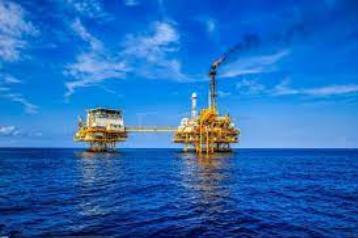Design and construction of Off shore container berths
Offshore container berths are essential infrastructural facilities that enable the efficient handling of containerized cargo in coastal and offshore areas. These structures are designed to accommodate large container ships, ensure safety and operational efficiency, and withstand harsh marine environments. The design and construction of such facilities demand meticulous planning, engineering expertise, and the integration of advanced technologies. This essay delves into the key aspects of designing and constructing offshore container berths.
1.Design Considerations
The design of an offshore container berth encompasses multiple parameters to ensure functionality, safety, and sustainability. The key design considerations include:
Site Selection
- Hydrographic Conditions: Understanding tides, currents, and wave dynamics is critical for berth location.
- Geotechnical Properties: The seabed’s soil characteristics determine foundation design and construction techniques.
- Environmental Impact: Minimizing ecological disruption is essential for sustainable development.
Structural Design
- Berthing and Mooring: The structure must safely accommodate berthing forces from large vessels and mooring line tensions.
- Load-Bearing Capacity: It must support heavy gantry cranes, cargo handling equipment, and stacked containers.
- Materials: Durable materials like high-strength concrete, corrosion-resistant steel, and composites are essential to withstand marine environments.
Operational Efficiency
- Navigation Requirements: Ensuring adequate channel depth, width, and turning radius for container ships.
- Cargo Throughput: Designing for optimal loading/unloading rates with efficient yard layouts.
- Intermodal Connectivity: Seamless transfer of containers to rail, road, or other shipping vessels.
Safety and Compliance
- Adherence to international maritime regulations: Including IMO and ISO standards.
- Implementation of safety measures: Mitigating risks such as collisions, spills, and structural failures.
2.Construction Techniques
The construction of offshore container berths involves advanced methodologies tailored to marine conditions. Key construction stages include:
Foundation Preparation
- Seabed Dredging: Ensures uniform depth and removes unsuitable materials.
- Pile Driving: Steel, concrete, or composite piles are driven into the seabed for structural support.
- Ground Improvement: Techniques like vibro-compaction and grouting enhance seabed stability.
Vibro-Compaction
Vibro-compaction is a ground improvement technique used to densify granular soils such as loose sands. A vibroflot, a long vibrating probe, is inserted into the ground using water or air jets. The vibrations rearrange soil particles into a denser configuration, reducing void spaces and increasing soil stability. The probe is gradually withdrawn, and granular material may be added to fill any voids. Vibro-compaction is particularly useful in enhancing seabed stability for supporting offshore structures.
Superstructure Construction
- Deck Construction: Precast or in-situ concrete decks are used to create a durable platform.
- Crane Rail Installation: Rails for gantry cranes are embedded within the deck for precise operations.
- Utility Integration: Power, water, and communication systems are embedded into the structure.
Protective Measures
- Corrosion Protection: Application of cathodic protection and anti-corrosive coatings on steel components.
- Wave Deflection: Installation of breakwaters or wave deflectors to shield the berth.
- Seismic Resilience: Design measures like base isolation and reinforced connections enhance earthquake resistance.
Modular Construction
- Pre-fabricated modules: Transported and assembled offshore significantly reduce construction time and costs.
3.Challenges and Solutions
Building offshore container berths presents numerous challenges, such as:
Harsh Marine Conditions
- Challenges: High salinity, strong currents, and storms accelerate material degradation.
- Solutions: Use of advanced coatings, corrosion-resistant alloys, and robust structural designs.
Environmental Concerns
- Challenges: Habitat disruption, water pollution, and ecological imbalances.
- Solutions: Conducting Environmental Impact Assessments (EIAs) and implementing habitat restoration projects.
Logistical Constraints
- Challenges: Transporting materials and equipment to remote offshore sites.
- Solutions: Modular construction and use of specialized marine vessels like barges and floating cranes.
Financial Implications
- Challenges: High capital investment and operational costs.
- Solutions: Phased construction, public-private partnerships, and adoption of cost-efficient technologies.
4.Emerging Trends and Innovations
Advancements in technology are reshaping the design and construction of offshore container berths:
Smart Port Integration
- Implementation of IoT devices, AI, and blockchain: For real-time monitoring and seamless operations.
Sustainable Construction
- Use of low-carbon concrete, recycled materials, and renewable energy sources.
Autonomous Systems
- Adoption of automated container handling equipment and unmanned vessels.
Floating Berths
- Innovative floating platforms: Adapt to tidal variations and reduce environmental impact.
5.Conclusion
Offshore container berths are pivotal for global trade and economic development. Their design and construction require a holistic approach, balancing technical, environmental, and economic factors. By leveraging modern engineering practices and sustainable innovations, these facilities can meet the growing demands of maritime logistics while ensuring environmental stewardship and operational excellence.

